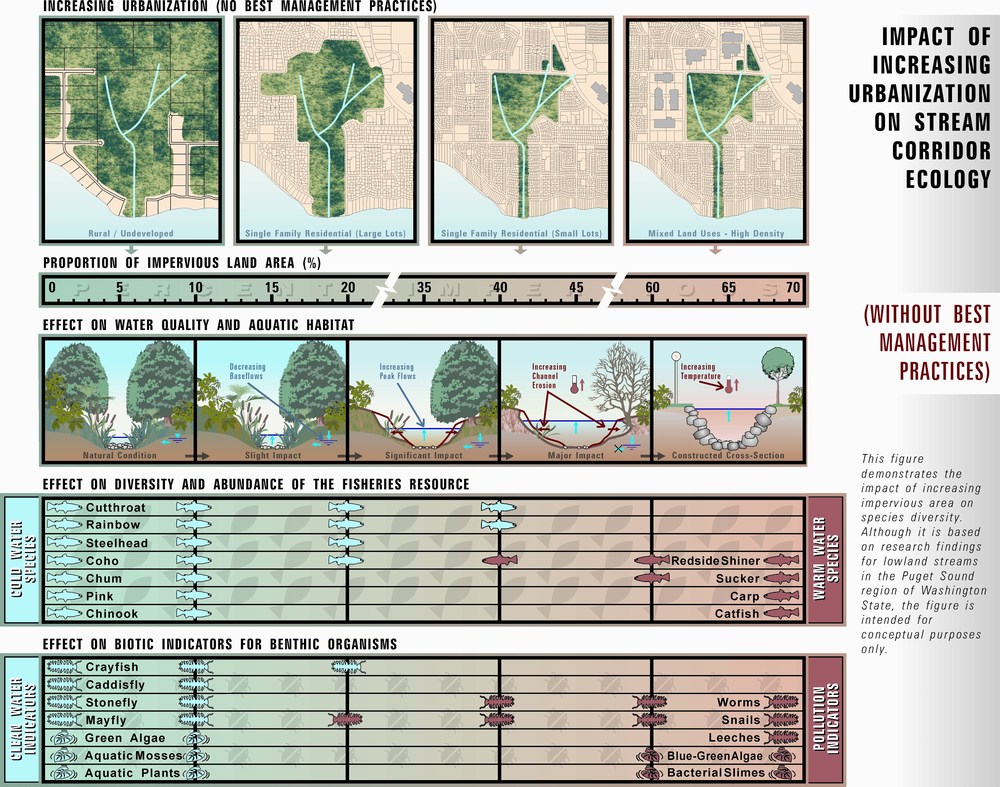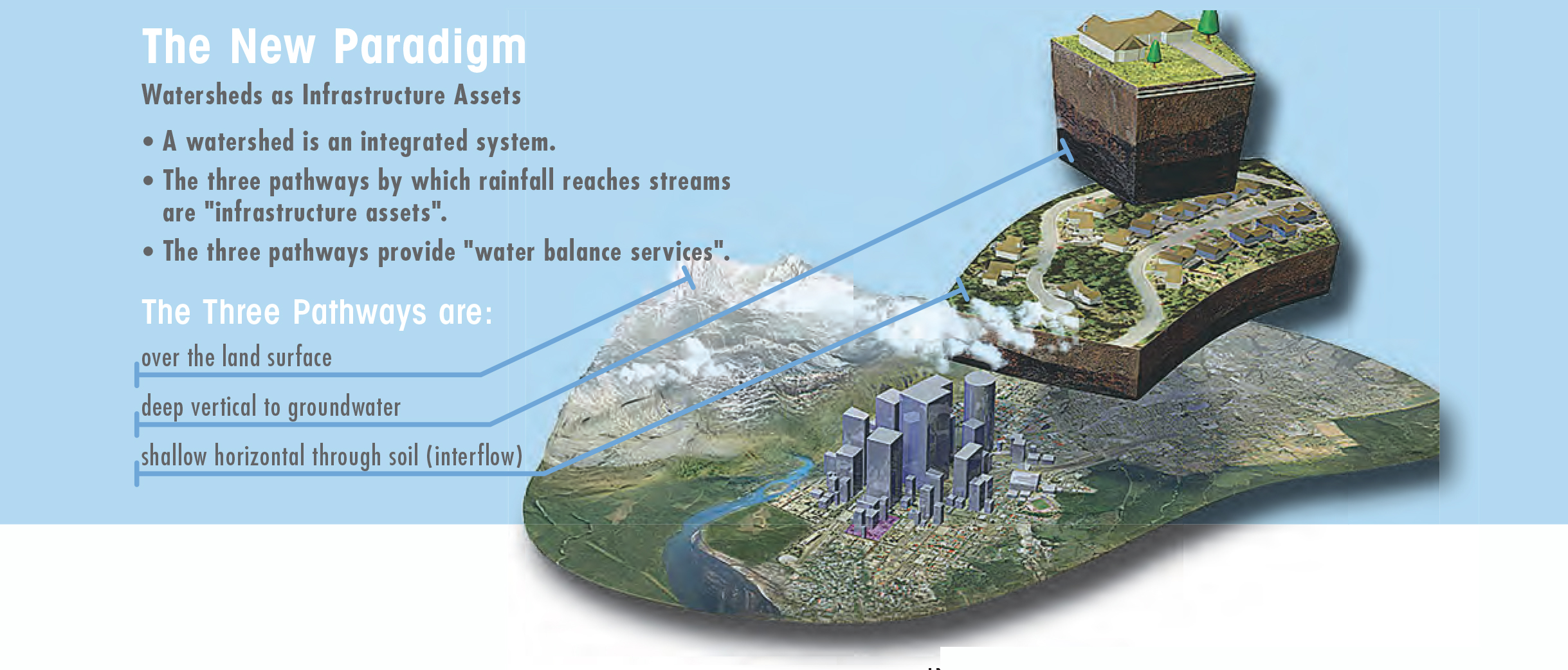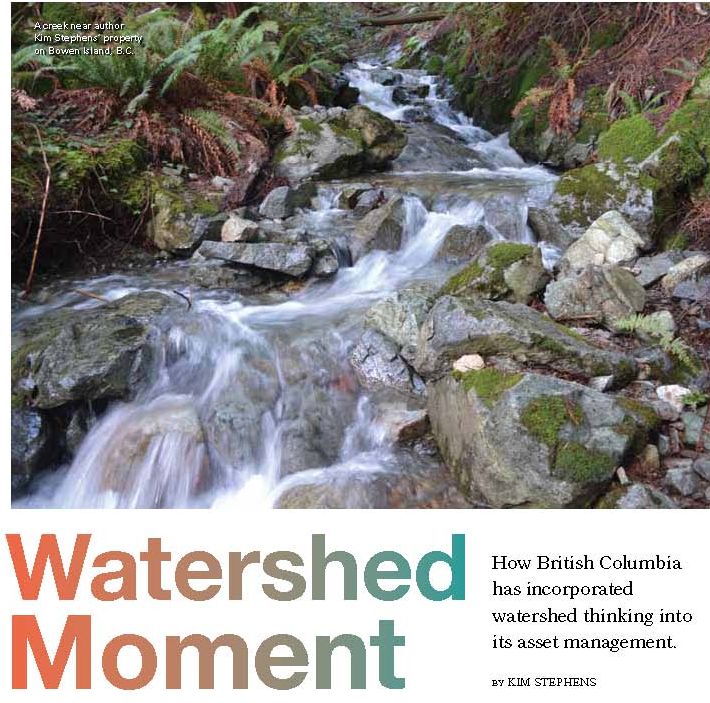$250 Billion Sink or Swim: How Canada Can Finance the Water Infrastructure Gap
Watershed Moment: How British Columbia has incorporated watershed thinking into its asset management
 The theme for the September-October 2016 issue of Canada Water magazine is: $250 Billion Sink or Swim: How Canada Can Finance the Water Infrastructure Gap. The number increases as assets deteriorate. However, the true scale of the infrastructure deficit in Canada is unknown precisely because there is no set of asset management plans to draw from.
The theme for the September-October 2016 issue of Canada Water magazine is: $250 Billion Sink or Swim: How Canada Can Finance the Water Infrastructure Gap. The number increases as assets deteriorate. However, the true scale of the infrastructure deficit in Canada is unknown precisely because there is no set of asset management plans to draw from.
Canada’s drinking waters, wastewater, and stormwater infrastructure is essential for maintaining quality of life, the environment, and is the backbone of the environment. And so – sink or swim. How do communities close the gap? Where will the money come from?
Watersheds as Infrastructure Assets
 The September-October 2016 issue features an article by Kim Stephens, Executive Director of the Partnership for Water Sustainability in British Columbia. His article provides historical context for evolution of an “asset management approach” to urban watershed management in British Columbia. He describes the influence that Washington State research had in the 1990s about changing the conversation from one that was engineering-centric to one that is about whole systems thinking.
The September-October 2016 issue features an article by Kim Stephens, Executive Director of the Partnership for Water Sustainability in British Columbia. His article provides historical context for evolution of an “asset management approach” to urban watershed management in British Columbia. He describes the influence that Washington State research had in the 1990s about changing the conversation from one that was engineering-centric to one that is about whole systems thinking.
 “In the 1990s, Bill Derry, the founding Chair, Washington State Stormwater Managers Committee, and I led a workshop program for B.C. local government, and provided cross-border sharing of the latest research,” wrote Kim Stephens. “We created what became known as the ‘fish pictures’. These graphics translated the science, informed decision-making, and set the stage for British Columbia to move towards sustainable watershed asset management.”
“In the 1990s, Bill Derry, the founding Chair, Washington State Stormwater Managers Committee, and I led a workshop program for B.C. local government, and provided cross-border sharing of the latest research,” wrote Kim Stephens. “We created what became known as the ‘fish pictures’. These graphics translated the science, informed decision-making, and set the stage for British Columbia to move towards sustainable watershed asset management.”
Hydrology Rules
“A legacy of past community and infrastructure design practices is a failure to protect the natural water balance (hydrologic integrity). This failure has financial impacts and implications for taxpayers. Consequences include expensive fixes for flooding, erosion and habitat damage,” explains Kim Stephens.
“Hence, an over-arching goal in restoring the hydrologic integrity of a watershed is to forestall any further unfunded taxpayer liability flowing from ‘changes in hydrology’. A cornerstone of this approach is the transformational work of Richard Horner and Chris May, whose research findings made it possible for Bill and me to create the fish pictures in 1997. Two decades on, we still celebrate their accomplishments. Their seminal work is standing the test of time,” Kim Stephens emphasizes.

‘FISH PICTURE’ BASED ON WASHINGTON STATE RESEARCH -Impact of Land Use Decisions on Aquatic Diversity and Abundance (Source: Stormwater Planning: A Guidebook for British Columbia, 2002). Adapted from research by Drs. Richard Horner & Chris May
Whole System Services
“The water balance of a watershed needs to be protected and managed in the same way that engineered assets and the services they provide are managed. Failure to protect the hydrologic integrity of water balance pathways has level-of-service and lifecycle implications, as well as financial impacts for taxpayers to shoulder,” concluded Kim Stephens.
“A legacy of past community planning and infrastructure servicing practices is the water balance of urban watersheds is out of balance. Asset management is the lens for bringing land development and infrastructure servicing practice into line with science-based understanding.”
To Learn More:
Download Watershed Moment: How British Columbia has incorporated watershed thinking into its asset management to read the complete article published in the September-October issue of Water Canada magazine.



